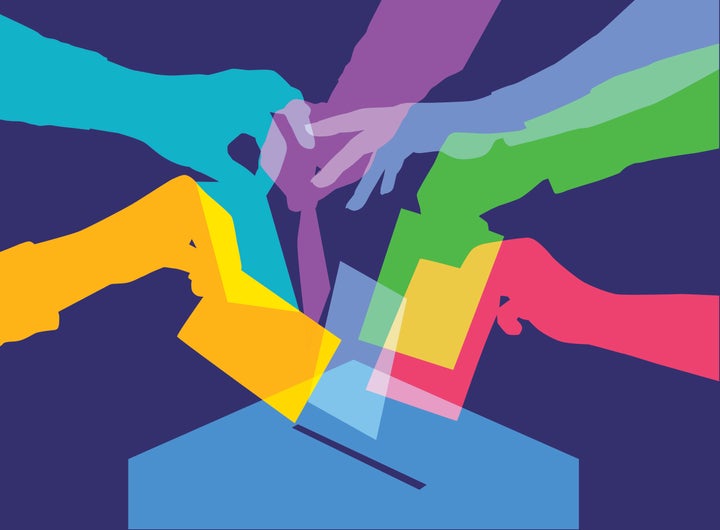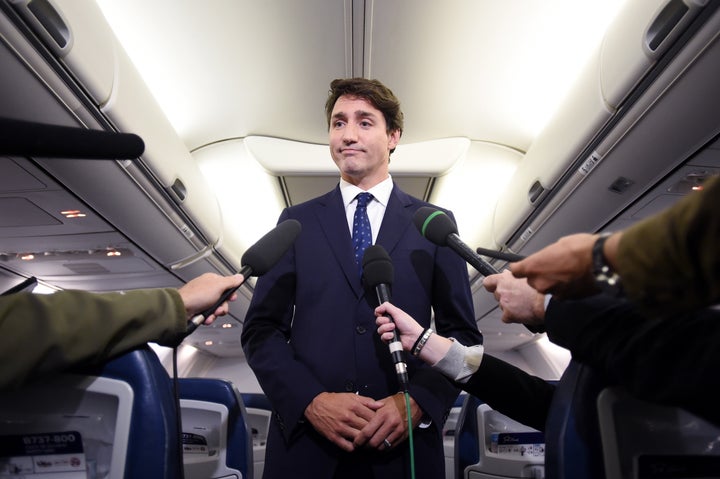During election season, political coverage is fuelled by a single survey question, often posed to a thousand Canadians at a time: if the election were held tomorrow, how would you vote?
This is often accompanied by a follow up — if you’re undecided, how would you lean if you had to choose? If you are having an actual conversation with a live survey interviewer, you may avoid some awkwardness by finally admitting that, if you had to, you’d go with X. If only to end the call.

Every few weeks — or, during campaign season, almost every night — political pollsters crunch these numbers. After removing the undecideds, they’ll land on a simulated result of who would win if a hypothetical election took place. This is what we in the polling business call “vote intention.”
The vote, right now
Occasionally, high-profile media events, especially during campaign period, shift voter attitudes. We may relitigate whether or not Conservative Party leader Andrew Scheer should have compared same-sex marriage to a dog’s tail. Perhaps we find out, four years in, that Liberal Party leader Justin Trudeau has a history of integrating brown and blackface into his costuming.
When this happens, researchers rush into the field with a 10-minute survey to see how these issues are tracking with Canadians — do they care about marriage equality? Blackface? Dog’s tails? These are all questions that are newsworthy, but everyone really just wants to know one thing: what’s the score now?
“While they tell a story about trends over time, they are not designed to predict a future outcome.”
Vote intention is that score, and it’s the number you’re going to interact with most in the weeks ahead when you see any sort of political coverage or references to how well each party is doing. It’s an important number. But it’s only important in the same way if you recorded on paper what I wanted to snack on, right now. I could go for Sweet Chilli Heat Doritos or Cheetos right this second. When the chips are down at 2 a.m. in the convenience store, I may succumb to weeks of digital targeting guiding my vote toward Old Dutch Ketchup.
In much the same way, and acknowledging the rare miss, scientifically deployed vote intention questions in surveys are highly accurate in predicting the result of an election when conducted a few days before an election, when minds are made up. They make a pretty good stand in for what would happen if we held a national election every night (fun, I know), but only represent a snapshot in time. While they tell a story about trends over time, they are not designed to predict a future outcome.
Vote intention in context
When we ask Canadians who else they would consider voting for, only one in four close themselves off to any other option. If you look at the responses of only Canadians under 30, fully 62 per cent say they are likely to switch their vote, regardless of how they would vote in a hypothetical “today.” Many Liberal voters would happily consider the NDP, CPC or Greens; many Conservative voters would happily consider the Liberals, NDP or Greens; and the NDP vote could likewise go any which way. There are some “left-wing” voters that would only consider parties on the left, but the electorate largely does not live in static, ideological tribes.

The progression of vote intention from 30 per cent, to 32 per cent, to a 35-per-cent victory on election day isn’t a neat story of convincing voters to move a few points at a time with measured, methodical steps. It’s a complex dance of Liberals going Tory (?), Tories going NDP (??) and other random shifts caused by a local candidate with a social media history or a prime minister caught in a scandal at the worst possible time.
Vote intention moves within a wider pool of what we call “accessible voters,” who come from asking not about who you would vote for today, but who you would ever consider. While accessible voter numbers aren’t as good at simulating the scoring we crave, they can better reflect the dynamics of the election at the start of a campaign.
Today, at any given moment, about half the country is open to voting for any of the three main parties. Recently, enthusiasm around the climate agenda has seen the Green Party join the three mainstays, with a study recently showing 41 per cent of Canadians would now openly consider voting for the Greens. This is a big shift for a group that in the last two elections received just three to four per cent of the vote.
It was in part this dynamic that cemented Maxime Bernier’s participation in the upcoming leader’s debate. Having done research in four ridings where the People’s Party of Canada believes its candidates have a shot at election, the Leader’s Debate Commission found that while vote intention might be low for Bernier’s party, 25 to 30 per cent of local voters were hypothetically open to voting for a local PPC candidate, either saying they “might possibly,” “be likely to” or “certainly will.”

The takeaway? Every registered party with enough registered candidates can hypothetically win the election. Accessible voter pools tell us the Liberals, Conservatives and the NDP are the most likely to be the winners. The PPC might pick up a few seats, the Greens likewise.
The score right now tells us it looks like a race between the Liberals and Conservatives, with the NDP far behind. Leading up to 2015, vote intention told us it was a tight race between the NDP and Conservative Party — until it suddenly wasn’t. While the NDP led vote intention and the CPC followed, few considered that 70 per cent were telling pollsters that they had not yet decided who they were voting for. Vote intention was telling us a story that had the potential to change all along.
The media’s scrapbooking of the Liberal leader’s early years offers a good opportunity to look out for measures that may help in your assessment of what could happen a month from now. Recent polling results suggest a modest downward shift for the Liberal Party as a result of last week’s scandal, though I would wait for a few more datapoints and three to five days before feeling confident in any lasting impact. In the days ahead, I’ll be looking at metrics like:
- Did trust in the Liberal leader decline?
- Is there a lower degree of enthusiasm to vote Liberal on the part of current supporters?
- Did the universe of voters open to the Liberal Party shrink?
- Do they believe Trudeau is credibly sorry, his intentions are in the right place?
- Relative to this issue, are current Liberal voters more concerned with policy challenges like climate change and income inequality?
- Did the NDP leader’s handling of the issue yield dividends in exposure or popular support?
Keep an eye out for these datapoints regularly put out by research firms. These are the factors that will drive vote intention and either lead to four more years of the same or a change in government. When October 21 rolls around, you’ll find yourself less surprised.
Have an opinion you’d like to share on HuffPost Canada? You can find more information here on how to pitch and contact us.
Also on HuffPost: